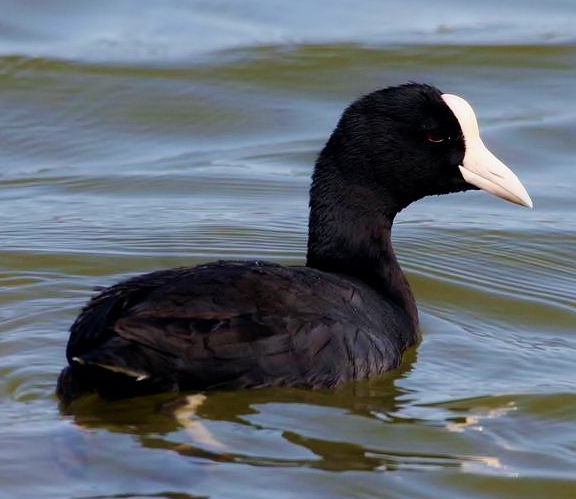Fulica alai
 |
| Photo by Caleb Slemmons (Forestry Images) |
Common name:
Hawaian coot (en); galeirão-do-Hawai (pt); foulque des Hawaï (fr); focha hawaiana (es); Hawaiibläßhuhn (de)
Taxonomy:
Order Gruiformes
Family Rallidae
Range:
This species is endemic to the Hawaiian islands, where it is found on all the main islands except Kaho’olawe.
Size:
The Hawaian coot is 33-41 cm long and weighs 650-720 g.
Habitat:
These birds can be found in virtually any body of water, including estuaries, marshes and golf course wetlands. They are typically found in coastal plains, usually below 400 m, but may be present in mountain stock ponds up to 2.000 m above sea level.
Diet:
Hawaian coots mostly eat the seeds and leaves of aquatic plants, but also insects, tadpoles, and small fish.
Breeding:
These birds can breed all year round, nesting in areas of robust emergent plants interspersed with open, fresh or brackish water, usually less than 1 m deep. The nest is made of aquatic vegetation, either floating or anchored to clumps of emergent plants. There the female lays 4-6 eggs which are incubated for 23-27 days. The chicks leave the nest soon after hatching, but remain with their parents only fledging some 8 weeks after hatching.
Conservation:
IUCN status – VU (Vulnerable)
The Hawaian coot has a restricted breeding range and a global population estimated at just 2.000-4.000 individuals. The main threat affecting this species is the destruction of their wetland habitats due to drainage for cultivation and developments such as hotels, housing areas, golf courses, shopping centres, landfill sites, military installations, roads and industrial sites. Introduced predators, such as black rat Rattus rattus, brown rat Rattus norwegicus, domestic cat and dog, small Asian mongoose Herpestes javanicus and cattle egret Bubulcus ibis are an additional threat. The species may also be poisoned by insecticides and herbicides used to treat water channels on agricultural land and golf courses.







